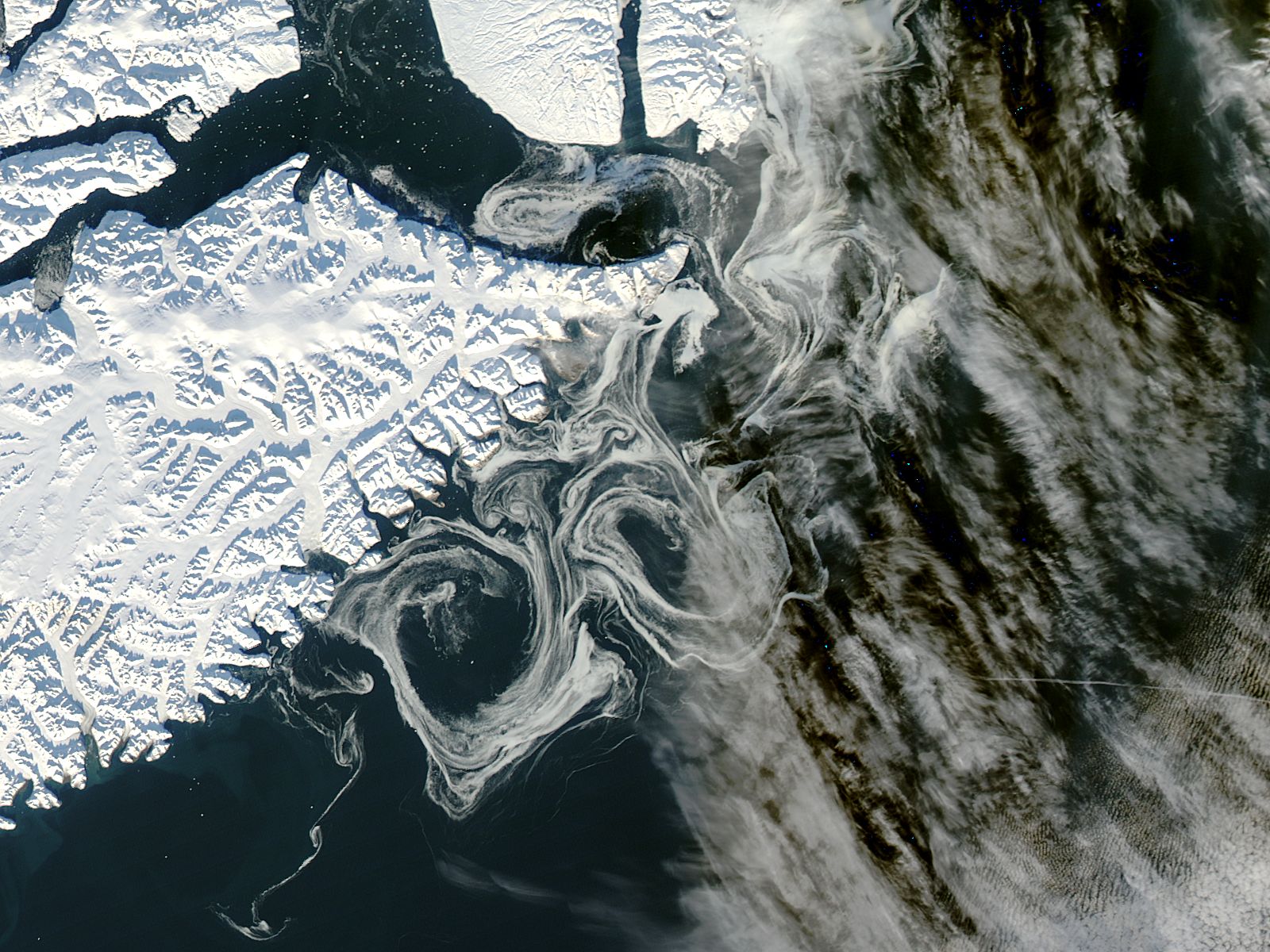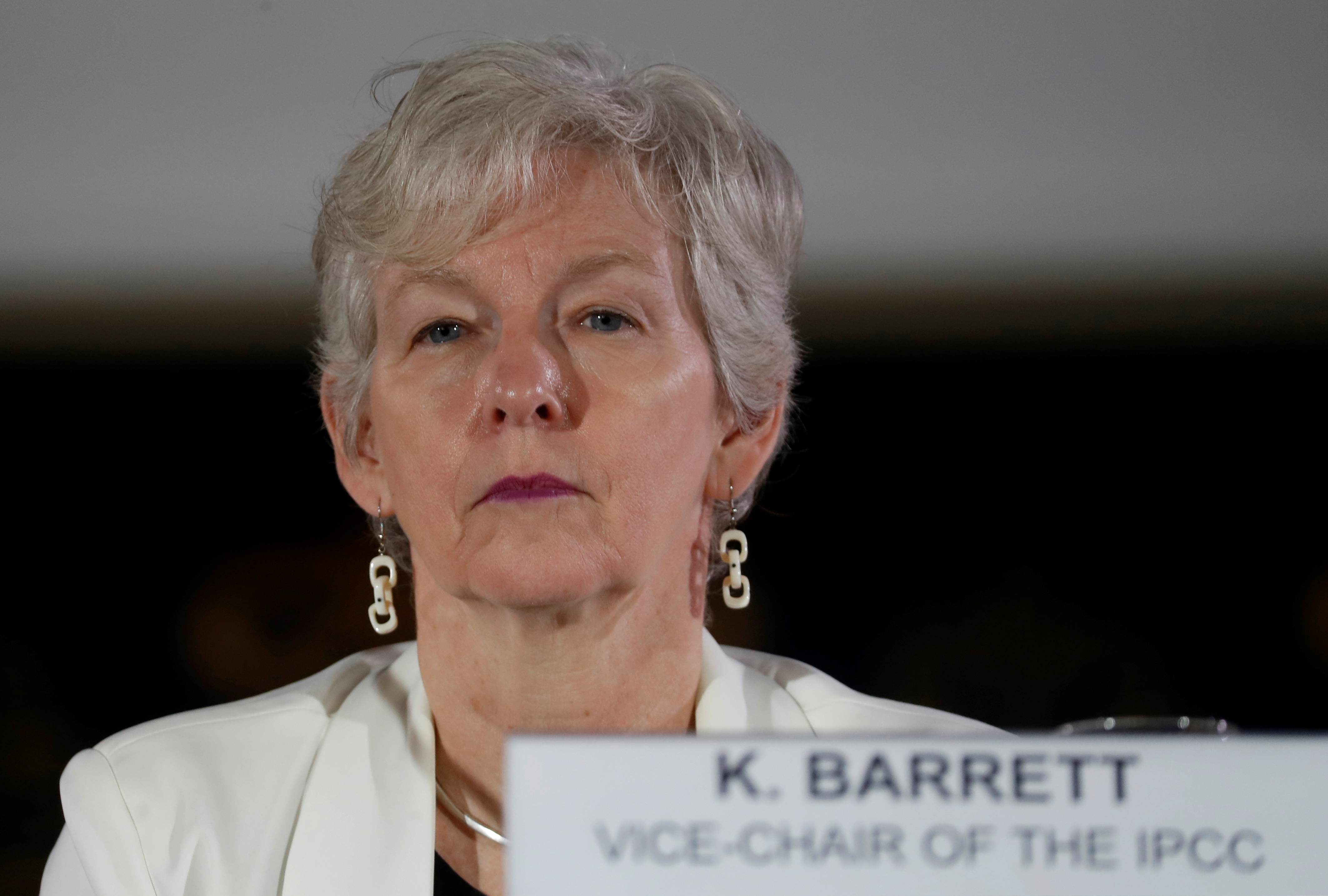A new IPCC report details sweeping changes to oceans, ice and the global impacts of Arctic melt
"The ocean has been acting like a sponge, absorbing carbon dioxide and heat to regulate the temperature. But it can’t keep up.”

Arctic melt, thaw and rapid temperature rise are big contributors to the changes in the entire planet’s water system, said a landmark report released Wednesday by the Intergovernmental Panel on Climate Change.
The report shows how the world’s marine and fresh waters are changing because of human-caused carbon emissions and the role that the Arctic, which is warming at twice the global rate, plays in those changes.
“For the first time, the IPCC has produced an in-depth report examining the furthest corners of the earth, from the highest mountains and remote polar regions to the deepest oceans. We have found that even and especially in these places, human-caused climate change is evident,” Ko Barrett, the panel’s vice chair, said at a news conference held in Monaco.
The report “documents the way in which the ocean has been acting like a sponge, absorbing carbon dioxide and heat to regulate the temperature. But it can’t keep up,” Barrett said. “Taken together, these changes show that the world’s oceans and cryosphere have been taking the heat for climate change for decades. The consequences for nature and humanity are sweeping and severe.”
The Special Report on the Ocean and Cryosphere in a Changing Climate was authored by 104 scientists who worked for two years on the document and cited nearly 7,000 published studies, the IPCC said.

Among the findings is a catalog of changes to Arctic sea ice. The September minimums have shrunk at a rate of 12.8 percent per decade since 1979, and reductions have been happening for all months of the year, the report said. Changes in September sea ice are “likely unprecedented for at least 1,000 years,” said the report’s summary for policymakers. Sea ice has also thinned dramatically, with 90 percent of multiyear ice lost since 1979, the report said.
If the global temperature rise is limited to the commitments made in the 2015 Paris Agreement — no more than 2 degrees Celsius above pre-industrial levels — the Arctic Ocean by the end of the century will be completely ice-free at the end of the seasonal melt in about one out of every three years, the report forecasts. If warming is reduced further to the Paris Agreement’s more ambitious target of 1.5 degrees Celsius, the chances of an entirely ice-free September Arctic Ocean drop significantly, to 1 percent, the report said.
But if carbon emissions continue at current levels, ice-free Septembers could arrive before the middle of the century, according to the report.
Melt of land ice — in Greenland, Antarctica and in the Arctic and mountain-area glaciers — is driving a big increase in sea-level rise, the report said. Globally, sea levels increased by 15 centimeters during the 20th century, but now the rate is twice as fast, 3.6 millimeters a year, and accelerating, the report said. Sea levels will rise by 30 to 60 centimeters by the end of the century even if greenhouse gas emissions are sharply reduced, but if current emissions levels continue, sea levels will rise by twice that amount, the report said.
In a chapter devoted to polar regions, the report details past change and future projections for ice sheets, which Barrett called “the freshwater for our future,” thaw of permafrost, which she called “the frozen foundation for communities and wildlife habitats of the north,” conditions for cold-water fish populations and other subjects. It synthesizes findings from past studies on subjects like permafrost-thaw risks to Arctic infrastructure, health and safety of Indigenous Arctic peoples who depend on wild food for sustenance and for their cultures, and abrupt events, like wildfires and landslides, that expose permafrost and cause hazards for communities. And it makes projections for the future:
“Across many aspects, the polar regions of the future will appear significantly different from those of today,” the study chapter says in its conclusion section.
Among the Arctic details in the polar chapter:
- Temperatures of permafrost at depths of 10 to 20 meters have reached record-high levels at several long-term monitoring sites. If current rates of carbon emissions continue, most of the Arctic’s near-surface permafrost will be thawed by the end of the century.
- June snow cover north of Latitude 60 declined 13.4 percent per decade from 1981 to 2019. If current carbon emission rates continue, the decrease in June snow cover is expected to accelerate, reaching up to 25 percent by mid-century.
- Warming-induced expansion of shrubs is expected to cause those woody plants to cover 24 percent to 52 percent of areas that are currently Arctic tundra. That will increase risks of high-latitude wildfires because shrubs are more flammable than tundra plants.
- Loss of Greenland ice sheet mass in the 2007-2016 period was double that of the previous decade, and summer melt of Greenland’s ice is at “a level unprecedented over at least the last 350 years, and two-to-fivefold the pre-industrial level.”
- Arctic-wide, warming is expected to increase overall precipitation, including rain-on-snow events, and river outflow, resulting in a 30 percent increase in freshwater flux into the Arctic Ocean by the end of the century. That, in turn, will drive multiple changes in the marine system.
- Fish species are shifting as ocean ice vanishes and water warms. Temperate Atlantic mackerel have expanded into the Nordic seas, warming bottom-water temperatures in the Bering Sea have contracted ranges for Arctic species and commercially important species like Atlantic cod and haddock have moved farther north in the Barents Sea.
- Freshwater lakes, rivers and streams in the Arctic, because they tend to be shallow, are warming rapidly and at high risk for future warming. That has already caused disruptions for freshwater fish, such as a big increase in fungal infections that have been documented in Arctic Alaska whitefish. By midcentury, Arctic lakes are expected to thaw 10 to 25 days earlier in spring, on average, than they did in the late 20th century, and freeze an average of 15 days later in fall or winter.
- While ocean acidification is largely the result of the marine waters absorbing atmospheric carbon, melting ice is also a factor because it changes ocean chemistry and circulation. If current rates of carbon emissions continue, melt of ice will be the biggest contributor to acidification of surface waters in the Central Arctic Ocean, the Canadian Arctic Archipelago and Baffin Bay.
The polar chapter also details past and projects impacts of warming to people in the Arctic — both the roughly 4 million permanent residents, many of them Indigenous, and the industrial activities like transportation and oil and gas production. It also discusses efforts to mitigate and adapt to changes, such as the use of new shipping-safety rules and new systems for travel over landscapes that are no longer dependably frozen.
But there should be more attention given to Indigenous perspectives, including the risks to Indigenous people of new diseases that will be spread by warming temperatures, it said.
A separate chapter on high-mountain areas includes projections for sea-level-rise impacts from melt of glaciers in Alaska, which are mostly located south of the Arctic Circle, and other non-Arctic glaciers. Under current carbon emissions levels, melt of mountain glaciers will be about twice the volume that would happen if carbon emissions are substantially reduced, the report said.